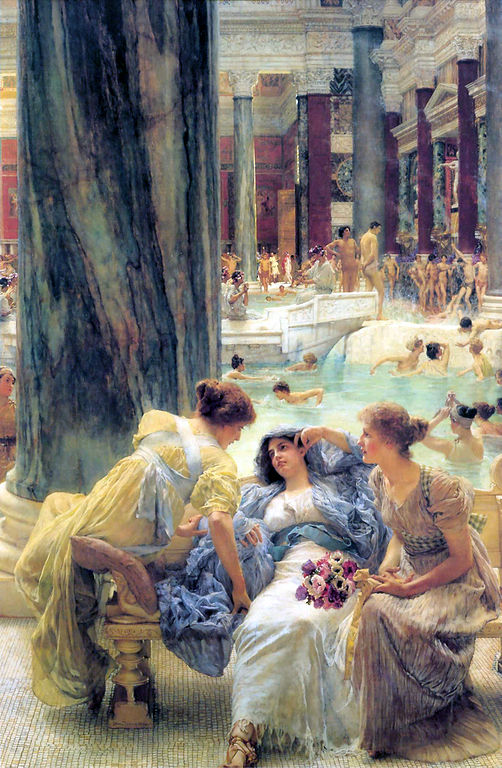
MARY COPELAND – VICTORIAN DETECTIVE: ALMA-TADEMA PART 2
As mentioned in my previous blog, I would tell you more about the famous painter Lawrence Alma-Tadema. From 1871 he got to know and was influenced by all the great Pre-Raphaelite painters. The man was a very precise person. He documented his work well, but also introduced an identification system for his paintings as early as 1872 to prevent forgeries. He wrote the numbers in Roman numerals under his name, not only for his new works, but also from his first painting: Portrait of my sister, Artje (1851). His last painting, Preparations in the Colosseum (1912), was numbered CCCCVIII (408). That was the number of paintings he had made during his lifetime.
In 1872 Alma-Tadema and his wife Laura went on a journey through Europe, including Italy. That’s when Alma-Tadema started collecting photos of ruins, which is the start of his formidable collection. Back in England, Alma-Tadema was naturalized. During this period he painted An Audience with Agrippa, which was an important piece in his development. In 1879 he was admitted to the Royal Academy of Arts. In 1883 he went back to Italy and visited Pompeii, among other places, where he also attended the excavations. Due to his increased knowledge of the Roman era, many of the found attributes were reflected in his work. Some critics thought he would turn it into a museum catalogue. Other critics noted that he gave the marble in his paintings too much colour. However, he was ahead of his time with that, because during those excavations it turned out that many of the walls were painted in bright colours. The painter’s obsession with the details in his paintings can be seen, among other things, in the fact that for the painting The Roses of Heliogabalus (which appears in the second story of my book) during the winter of 1887-1888, the blossoms were sent weekly from the Côte d’Azur to his studio for four months. In this way he was able to paint the blossoms according to reality.
Other important works from this period are An earthly paradise (1891), Unconscious rivals (1893), Spring (1894), The Colosseum (1896) and The Baths of Caracalla (1899). Alma Tadema not only painted themes from Classical Antiquity, but he also painted portraits, landscapes and watercolours. He also made etchings. Many etchings of his paintings were made by others.
The artist was a cheerful person. He loved people around him, and the parties he threw in the two houses he lived in in London testified to that. In a future blog I will write more about those houses, but also about the honours he received during his lifetime and the other pursuits of this creative artist.
Wit kind regards,
Robbert Jan.
Post Views : 214